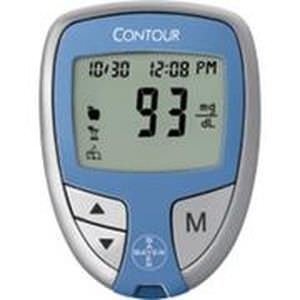William Davis's Blog: Dr. Davis Infinite Health Blog, page 141
April 1, 2015
Hayley’s eye-popping Wheat Belly success

Hayley shared her photos of her Wheat Belly success.
“I went wheat free 14 months ago and this is how I changed…Will never go back to my old ways!”
Despite the sunglasses in Hayley’s “before” photo, you can still make out that she lost substantial facial swelling and edema in the “after,” in addition to the lost weight. This lifestyle has also changed her body shape in addition to losing the visceral tummy fat.
Doesn’t she look spectacular?
The post Hayley’s eye-popping Wheat Belly success appeared first on Dr. William Davis.
Crystal loses her Wheat Belly in time for summer!

Crystal shared her stunning loss of tummy fat with the Wheat Belly lifesetyle.
Okay I’m finally getting brave enough to post this. This month marks the one-year date I have been without wheat. It has been a slow but steady progress.
Crystal may be a bit shy, but I think she looks stunning. While she has lost her outwardly visible “muffin top,” it has been paralled by loss of deep visceral fat and its inflammatory effects. It means that, by losing this abdominal fat, Crystal has also reversed or reduced her risk for dozens of health conditions, from diabetes to fatty liver to dementia.
The post Crystal loses her Wheat Belly in time for summer! appeared first on Dr. William Davis.
March 31, 2015
Terri down 85 pounds . . . and looks different!

Terri shared her photos, once again revealing the impressive changes in appearance that result with eating no wheat or grains and losing a substantial amount of weight.
“I went grain- and sugar-free July 5, 2014.
“I am down 85 lbs and went from a size 22W to a size 12!”
Make no mistake about it: the “official” advice to “cut fat and eat more healthy whole grains,” along with the proliferation of junk snacks pushed by Big Food, is responsible for impairing the weight and health of the public on an unprecedented scale. Terri achieved her 85 pound loss with elimination of grains and sugar but note that, of the two, grains are the more important to eliminate, as they yield the gliadin protein derived opiates that drive appetite, wheat germ agglutinin that blocks the hormone of satiety, leptin, and amylopectin A that yields the greatest rise in blood sugar (higher than table sugar, ounce for ounce) that is followed by the greatest drop in blood sugar–hypoglycemia–accompanied by shakiness, mind fog, and hunger. In short, grains trigger desire for sweets, not the other way around.
Just look at what you can accomplish when you reject the awful, misguided advice of all “official” providers of dietary advice.
The post Terri down 85 pounds . . . and looks different! appeared first on Dr. William Davis.
Natalie’s breathtaking facial tranformation

Here is yet another jaw-dropping change in appearance by following a lifestyle free of all inflammation-provoking wheat and grains. Natalie reports being free of all grains for two years to achieve this transformation.
Think of the contortions people go through to achieve similar changes: botox, filler injections, even lap-band or gastric bypass. Yet the wonderful transformations you witness on these pages were all achieved by making a simple shift in food choices.
The post Natalie’s breathtaking facial tranformation appeared first on Dr. William Davis.
March 30, 2015
Just what happens with Wheat Belly faces?

Here are the “before” and “after” selfies shared by Doug after his 4-month Wheat Belly experience.
As with many other wheat/grain-free facial transformations, Doug has lost both edema and weight. But doesn’t there seem to be something else going on here? Can you put your finger on just what features change with this lifestyle? I’m sure that, if lighting had been identical in the two photos, we’d also see the changes in skin color, the loss of redness and facial seborrhea that are so common in this lifestyle. But I am convinced that there are other changes going on, as well.
The post Just what happens with Wheat Belly faces? appeared first on Dr. William Davis.
March 29, 2015
Whistleblowers wanted
Something happened to wheat in the 1970s during the efforts to generate a high-yield strain that required less fertilizer to make a 24-inch, rather than a 48-inch, stalk. Multiple other changes occurred, including changes in the structure of gluten, changes in wheat germ agglutinin, changes in alpha amylase (responsible for wheat allergy) . . . to name a few.
But chief among the changes in wheat were changes in the gliadin protein molecule. We know, for instance, that the Glia-alpha 9 sequence, absent from traditional wheat, can be found in virtually all modern wheat. This is likely the explanation underlying the four-fold increase in celiac disease over the past 50 years, since Glia-alpha 9 predictably triggers the immune reaction that leads to the intestinal destruction characteristic of celiac disease.
But modern wheat also stimulates appetite . . . not a little, but a lot. The introduction of modern high-yield, semi-dwarf wheat was accompanied by an abrupt increase in calorie consumption of 440 calories per day, 365 days per year. This is because modern gliadin in wheat is an opiate. But this opiate doesn’t cause a “high” like heroine; it causes appetite stimulation.
Big Food companies, commanding tens of billions (not millions, but billions, or 1000 millions) of dollars of revenues per year, employ some very smart food scientists. Among their many responsibilities, food scientists are charged with observing the eating behavior of humans who eat their products, often conducting taste tests and trials to observe eating behavior. (Anyone read Brian Wansink’s Mindless Eating? Great stories of food experiments with human subjects.) Surely food scientists noticed that, somewhere around 1985, appetite was enormously triggered by consumption of crackers, breads, pretzels, bagels and the multitude of other test products made of wheat making entry into the marketplace. After all, the business of food scientists is to observe eating behavior.
So why didn’t they sound the alarm? Why didn’t we hear food scientists declare “We think there’s something wrong in some of the new foods we are creating. Specifically, it appears that foods created from the new high-yield strains of wheat are triggering appetite substantially”?
Perhaps they couldn’t, being employed by Big Food companies with a need to maintain proprietary inside information. Or, perhaps they said something like “Shhhhhh! Don’t tell anybody! Let’s just put it in . . . everything!” How else can we explain the fact that, in the 1970s, wheat was only in primary wheat-based foods like breads, cookies, and cakes, but now wheat is in everything: It’s in canned and instant soups, salad dressings, licorice, granola and candy bars, virtually all fast food . . . you name it, wheat’s there. (Remember: Big Tobacco did precisely this kind of thing when they used to dope their cigarettes with higher nicotine content to increase addictive potential. As with many things wheat, tobacco showed us in how many ways big corporations can bend products and issues to their own agenda, your health be damned.)
Unfortunately, this is just my speculation, given the incredible and difficult-to-explain ubiquity of wheat. So I’m hoping to identify a whistleblower, someone from inside the walls of Big Food, preferably back in the 1980s when this phenomenon got underway. If you have such insights, please post a comment here, anonymously if you prefer.
In other words, it would be priceless to be able to prove that, not only did food scientists in Big Food know about the appetite-stimulating effects of modern wheat, they used this knowledge to increase revenues.
The post Whistleblowers wanted appeared first on Dr. William Davis.
March 28, 2015
If you have diabetes: NO low blood sugars!
Wheat elimination starts you powerfully on the path to reversing diabetes. We’ve seen it many times and it continues to develop in people who kiss their bagels, pretzels, and processed foods booby-trapped with wheat goodbye.
But, as diabetics become less diabetic–a process that can occur VERY quickly, often within days of removing all wheat products from their diet–but they are taking insulin or certain diabetes drugs, there is potential for hypoglycemia or low blood sugar. Low blood sugar from diabetes drugs can be dangerous and should be avoided at all costs. (Imagine if a non-diabetic started administering insulin or blood sugar-reducing drugs–it would result in a mess.)
Unfortunately, you cannot always rely on your doctor. Most physicians are unschooled in how to cure diabetes and therefore how to manage the hypoglycemia that may develop on your way to cure. (They are very good at CAUSING diabetes, however, prescribing diets like “An 1800-calorie American Diabetes Association Diet,” a typical dietary order in the hospital that RAISES blood sugar.) It is nonetheless important to at least discuss your questions with your doctor. (If you encounter resistance, get a new doctor, preferably one in functional medicine who is more apt to understand nutrition and biochemistry.)
“There is not a shred of evidence that sugar, per se, has anything to do with getting diabetes.”
Richard Kahn, PhD
Recently retired Chief Scientific & Medical Officer
American Diabetes Association
Dr. Kahn’s comment echoes conventional thinking on diabetes: Eat all the grains and candy you want . . . just be sure to talk to your doctor about diabetes medications.
If you eat foods that increase blood sugar, it increases your need for diabetes medications. If you reduce or eliminate foods that increase blood sugar, then it decreases your need for diabetes medications. The equation for most people with adult, or type 2, diabetes, is really that simple.
But several precautions are necessary if you are diabetic and are taking certain diabetes drugs. The potential danger is hypoglycemia, low blood sugars (e.g., less than 70 mg/dl) . . . as well as the uninformed objections of many doctors who have come to believe that diabetes is incurable, irreversible, and a diagnosis for life.
Some medications, such as metformin (Glucophage), pioglitazone (Actos), rosiglitazone (Avandia), and acarbose (Precose), rarely if ever result in hypoglycemia when taken by themselves. They are effective for preventing blood sugar rises, but tend to not generate blood sugar lows.
However, other medications, especially glyburide (DiaBeta, Micronase), glipizide (Glucotrol), glimepiride (Amaryl), and various insulin preparations can cause severe and dangerous hypoglycemia if taken while reducing or eliminating wheat and carbohydrates. For this reason, many people eliminate these oral drugs or slash insulin doses by 50% at the start, even if it means some temporary increase in blood sugars. The key is to avoid hypoglycemia as you consume less food that increases blood sugar, even if it means higher near-term blood sugars.
Other medications, such as sitagliptin (Januvia), saxagliptin (Onglyza), linagliptin (Tradjenta), exenatide (Byetta) and liraglutide (Victoza) usually do not result in hypoglycemia but occasionally can, especially if taken in combination with other diabetes drugs.
Because of the complexity of these responses, you should ideally work with a healthcare provider adept at navigating these issues as you become less and less diabetic. Problem: Most doctors and diabetes educators have no idea whatsoever how to do this, as they will tell you that, once you have diabetes, you will always have it and trying to get rid of it is fruitless and foolhardy (to the appreciative applause of the diabetes drug industry). So don’t be surprised if you are left on your own. At the very least, you want to check to see if your doctor will work with you and, if not, at least try and find another who will. Also, frequent monitoring of blood sugars is essential. I tell my patients on the path to becoming non-diabetic that high blood sugars (though maintained below 200 mg/dl) are preferable to low blood sugars (below 100 mg/dl) in this transition period. If, for instance, you are obtaining blood sugars in the morning (fasting) of 100 mg/dl, it is time to further reduce or eliminate a medication, such as glipizide or Lantus insulin taken at bedtime.
Any diabetic who wants to better understand the details of becoming non-diabetic would also benefit from knowing about the resources of Dr. Richard Bernstein, author of The Diabetes Solution. More information can be found at http://www.diabetes-book.com. The critical issue here is to understand that many people with diabetes have been told that they have an incurable condition for a lifetime and that a diet rich in “healthy whole grains” is essential—-advice that ensures you remain diabetic. Do the opposite─-eliminate “healthy whole grains,” especially the most dangerous grain of all, wheat─-and limit other carbohydrates, including non-wheat grains like millet and quinoa, and diabetes unwinds itself with reduced fasting blood sugars and HbA1c in the majority.
More recently, the American Diabetes Association’s Chief Scientific & Medical Officer, Dr. Richard Kahn, added, “Diabetes prevention is a waste of resources.” Why, think of all the money that could instead go to pharmaceutical research and marketing!
The post If you have diabetes: NO low blood sugars! appeared first on Dr. William Davis.
The ABCs of your post-grain experience
 Wheat/grain elimination is an exceptionally powerful tool for restoring health, reducing inflammation, returning metabolic distortions such as high blood sugar and blood pressure back to normal, and for losing weight. But many of the adverse health effects of years of grain consumption do not fully reverse with their elimination. Specific efforts may therefore need to be undertaken to accelerate your return to full health. Taking these extra steps stacks the odds heavily in your favor that you will enjoy full recovery from abnormal health conditions.
Wheat/grain elimination is an exceptionally powerful tool for restoring health, reducing inflammation, returning metabolic distortions such as high blood sugar and blood pressure back to normal, and for losing weight. But many of the adverse health effects of years of grain consumption do not fully reverse with their elimination. Specific efforts may therefore need to be undertaken to accelerate your return to full health. Taking these extra steps stacks the odds heavily in your favor that you will enjoy full recovery from abnormal health conditions.
Among the strategies to consider are:
Cultivate and nourish healthy bowel flora
I like to think of bowel flora, the thousand or so species of microorganisms that inhabit the human gastrointestinal tract, as a garden. Probiotics, i.e., anything that provides microorganisms believed to be among the desired inhabitants such as the various Lactobacillus or Bifidobacteria species, are like planting seeds for peppers and zucchini in your garden in spring time.
But what if you planted your seeds, then neglected to water and fertilize your garden? If you’re lucky, you might have a few peppers and zucchini after a few weeks, but you’re more likely to have a few stunted vegetables or nothing except a few shriveled vines. A successful garden requires water and fertilizer.
So it goes with bowel flora. You eliminate the extraordinary bowel-disruptive effects of grains–gliadin, gliadin-derived peptides, wheat germ agglutinin, indigestible D-amino acids, trypsin inhibitors, and others–then “plant” some desired species from a probiotic preparation or fermented food, but then fail to nourish them. It means that desired species may not proliferate, they may not outnumber and overpower unhealthy species such as E. coli, Staphylococcus aureus, Clostridium difficile, and Firmicutes. Unhealthy species are allowed to proliferate, thereby increasing intestinal permeability and resulting in higher blood levels of the bacterial byproduct, lipopolysaccharide, that is highly inflammatory. It also means that healthy bacteria fail to produce fatty acids, especially propionate and butyrate, that are required by intestinal cells for normal metabolism, heal “tight junctions” between cells (disrupted in conditions such as ulcerative colitis), and reduce potential for colon cancer. It also means that metabolic benefits, such as reduced insulin and blood sugar levels, reduced triglycerides, reduced blood pressure, and reduced visceral fat do not result–all because desirable bowel flora were not “fertilized.”
So what acts as water and fertilizer to bowel flora? What feeds them, allows them to proliferate and yield factors such as butyrate? Fibers. But not all fibers.
In a fascinating tale of symbiosis, the coexistence of microorganisms and Homo sapiens, a specific class of fibers, i.e., polysaccharides or polymeric sugars, that are indigestible to the human digestive apparatus but digestible via the enzymes expressed by specific bacterial species, allow all these beneficial health effects to occur. It means that food, chewed, swallowed, bathed in stomach acid, emulsified by bile, broken down into constituents by pancreatic enzymes, exposed to 20-some feet of small intestine, finally reaching the colon where most microorganisms dwell, contains little remaining nutrients to nourish bacteria. The desirable species that thrive in this unique environment are those that can digest the undigested remains of your meal–fibers. But not cellulose fibers, i.e., wood fiber, of the sort that dominates in grains and is found in bran cereals. Cellulose is essentially indigestible by both our own digestive apparatus, as well as the bacteria that humans are capable of carrying. (It is digestible by ruminants.)
The proper care and feeding of bowel flora therefore causes proliferation of healthy Bacterioidetes, Lactobacillus, and Bifidobacteria that produce bacteriocins that suppress growth of unhealthy species, metabolize fibers to butyrate that yields metabolic benefits, even improves bowel habits and allows you to have normal, healthy bowel movements without “crutches” like the bulk of cellulose fibers, laxatives, or enemas.
Is this evolutionarily appropriate? Is there precedent in human adaptation on this planet for such unique fibers? I ask this question because this is my litmus test for the suitability of any dietary strategy we consider. Recall, for instance, that grains were added 300 generations ago, or 0.4% of our time on earth, a mere moment in time ago. They are inappropriate for human consumption, now made worse by the genetic fiddlings of agribusiness. (I have to concede that grains do indeed have some fibers that have health benefits, such as arabinoxylan in wheat and beta glucan in oats, but they come with such undesirable other components that it is simply not worth it.) Yes, consuming such fibers is evolutionarily appropriate, as it dates back well over 8000 generations of human existence, predating even the appearance of the Homo species, even predating carnivory, as it was practiced by pre-Homo hominids, Australopithecus (especially “robust” strains). It is therefore deeply instilled (I almost said “ingrained”–acchhh!) into the adaptive physiology of our species.
So how do we obtain such indigestible fibers that nourish healthy bowel flora, so-called “prebiotics” or “resistant starches”? Well, do what a member of the Hadza of sub-Saharan Africa or Yanomamo of the Brazilian rainforest would do and grab a stick, stone, or bone fragment and dig in a field or forest for the underground tubers of plants. If you don’t want to do that, you can incorporate foods available in modern grocery stores that mimic such practices. Among the foods that yield such fibers:
Green unripe bananas or plantains–with around 27 grams prebiotic fibers per medium sized banana
Raw peeled potato–with around 20 grams per 3 1/2-inch medium
Inulin powder–with 5 grams per teaspoon
Bob’s Red Mill raw unmodified potato starch–8 grams per tablespoon
Legumes, lentils, chickpeas, hummus–Around 3 grams per 1/4-cup. But we have to be careful here, as any more than this quantity and blood sugars start to climb to unhealthy levels.
These are the most efficient sources, with lesser quantities in other below-ground vegetables. I pick one of the above foods and include them in a smoothie every morning along with, for instance, a cup of unsweetened coconut milk, some blueberries or other berries, a few drops of stevia, etc. If you choose the banana, peel it like an apple or chop off the ends and slit the skin, as it is very tough to skin when green. Chop both banana and potato coarsely before putting in the blender; a blender with a strong motor is advised. Rely on NO MORE than 2 level tablespoons of the potato starch, as more will raise blood sugar; use other choices to amp up your intake.
The science that examines bowel flora composition tells us that 20 grams of such fibers yield substantial effects. While the average grain-consuming human obtains around 3 or 4 grams per day, us grain-deniers can fall below this and experience undesirable bowel and metabolic effects. Benefits begin around 8 or 9 grams per day, with maximal benefit likely around 20 grams. (Interestingly, there is anthropological evidence of intakes as high as 135 grams per day.) When new to this experience, start with no more than 10 grams fiber per day; more and abdominal pain and bloating can occur; build up over days to weeks. Full benefits, such as reductions in blood pressure and blood sugar, require 4 to 8 weeks to show themselves, likely due to the shifts in bowel flora species.
Vitamin D
I rank correction of vitamin D deficiency as second only to wheat and grain elimination as the two most powerful strategies for overall health I have ever seen in my 20+ years of medical practice.
Vitamin D deficiency is rampant, given life in northern climates, wearing clothes year-round, working indoors, and the gradual loss of the ability to activate vitamin D in the skin as we age. It means that having a favorable vitamin D level in the body is uncommon outside of tropical climates or during summer months with plenty of skin surface area exposure in young people.
Among the benefits of restoring vitamin D are: improved mood and freedom from seasonal mood fluctuations; rise in HDL, drop in triglycerides; reduction in insulin and blood sugar; reduction in blood pressure; improved bone and joint health, including increased bone density; reduction in coronary disease risk and cancer; reduction in potential for dementia. And you just feel so much better.
The ideal approach to restoring vitamin D is to take a dose that raises 25-hydroxy vitamin D blood levels to 60-70 ng/ml (150-180 mol/L). While dose needs vary from individual to individual because of body weight, relative proportion of body fat, time of year, age, and genetics, most people require 4000-8000 units per day in gelcap or droplet form (not tablets: very poorly absorbed, sometimes not at all). Note that, if you are following blood levels, it requires 3 months for levels to stabilize after initiating supplementation or any change in dose.
Iron, zinc, magnesium
Absorption of positively-charged minerals, especially iron, zinc, and magnesium, is blocked by the phytates of grains. The second most common worldwide cause for iron deficiency anemia, for instance, is grain consumption, second only to blood loss (e.g., menstrual cycles). The phytate content of a bagel or two slices of whole wheat bread is enough to block iron absorption by 90%. Iron deficiency results in fatigue, lightheadedness, feelings of being cold, poor physical performance. Zinc deficiency most commonly results in skin rashes, itchiness, impaired growth in children, learning impairment, and gastrointestinal distress. Magnesium deficiency shows up as muscle cramps/”charlie horses,” higher blood pressure and blood sugar, loss of bone density, and heart rhythm disorders.
While mineral absorption improves dramatically with wheat and grain elimination, iron and magnesium typically need to be supplemented to make up for severe deficiency. Iron is best managed by checking a blood level of ferritin and a complete blood count (CBC), as iron overload can also occur. Magnesium can be safely supplemented on your own by the vast majority of people; I recommend taking the magnesium malate form, 1200 mg twice per day (180 mg “elemental” magnesium twice per day). Zinc can also be safely supplemented, 10-15 mg once per day.
Iodine deficiency–
Most of us have forgotten that, up until the early 20th century, iodine deficiency and goiters (enlarged thyroid glands) were major health problems worldwide, affecting 20% of people in most regions. The addition of iodine to table salt, along with encouragement to use plentiful salt solved the issue of iodine deficiency . . . but then led to adverse effects of overuse of salt in at least some people.
So modern people have been advised to cut back on salt–but everyone forgot about the iodine. Iodine deficiency has numerous health implications. It can take on special significance in the early wheat- and grain-free experience in that it can impair your ability to lose weight and impair full recovery of health.
I therefore urge people to obtain an inexpensive iodine supplement such as iodine drops or kelp tablets (dried seaweed) that provides 500 mug of iodine per day, what I believe to be the ideal intake of iodine. People with Hashimoto’s disease, Grave’s disease, or history of thyroid nodules or thyroid cancer should work with their doctors on iodine issues (though seek out a healthcare practitioner knowledgeable about this issue–most doctors are not), since iodine restoration needs to be managed carefully in these situations. However, those of us without these conditions can simply supplement iodine, allowing the thyroid gland to operate at full capacity.
Omega-3 fatty acids
The omega-3 fatty acids, EPA and DHA, available only from fish oil in truly healthy quantities (NOT flaxseed, chia seed, nor krill oil) yield considerable health benefits that include accelerated clearance of the byproducts of digestion (that contribute to heart disease), reduced triglycerides, and reduced overall cardiovascular risk and cancer risk.
However, a sufficient dose needs to be taken to achieve such benefits. I therefore advise people to take 3000 mg per day of EPA and DHA, divided in two. This is the level that raises the level of omega-3 fatty acids in blood cells to 10% or greater in most people, the level associated with maximum benefit. The best fish oil is the triglyceride form, i.e., the form that occurs naturally in fish. This is available as liquid fish oil from producers such as Halifax’s Ascenta NutraSea.
No gluten-free junk carbs
This bears repeating, as so many people interpret the Wheat Belly message as a “gluten-free” message, then booby-trap their health with gluten-free foods.
Let me be very clear: I do NOT advocate consumption of gluten-free processed foods made with cornstarch, tapioca starch, potato flour, or rice flour–they raise blood sugar sky-high, cause visceral fat accumulation, inflammation, and increase risk for cataracts, hypertension, diabetes, heart disease, cancer, and dementia.
We therefore replace wheat and grains with healthy choices that do not cause such problems. Don’t replace a problem–wheat and grains–with another problem–gluten-free junk carbohydrates.
Be aware of dairy casein beta A1
There are a number of tricky issues with dairy products, including lactose, potential exposure to antibiotic residues and bovine growth hormone, and estrogens. However, the real problem for many people may be a form of casein dairy protein produced by North American cows called casein beta A1.
Casein beta A1 is an immunogenic (immune system stimulating) form of casein that appeared through a chance mutation in cows around 6000 years ago. It is believed to underlie at least some cases of type 1 diabetes in children, some instances of autoimmune diseases like rheumatoid arthritis, heart disease, even sudden infant death syndrome.
Most dairy products in North America contain the casein beta A1 form, though it is present in small quantities in cheese and butter. Goat and sheep products do not have this form of casein.
That’s it!
Yes, it takes a bit of effort. But if your goal is to stack the odds in favor of full recovery from any condition, or to powerfully prevent such conditions, these strategies are your best, most accessible, inexpensive, yet effective ways to do so.
More discussions like this can be found in Wheat Belly Total Health.
The post The ABCs of your post-grain experience appeared first on Dr. William Davis.
March 27, 2015
What’s better than gluten-free? GRAIN-free!

Heather learned the hard way that thinking about food from the “gluten-free” perspective can impair health and lead you down some needless detours.
“The first picture was taken about six months ago. I have stage 3 adrenal fatigue, and had a total thyroidectomy nearly two years ago due to a multi-nodular goiter. It’s been a very long journey to wellness, and I’m fortunate enough to have a wonderful osteopathic physician helping me along. He was the one who suggested your book to me. I finally got around to reading it shortly after Christmas, and started the diet a little over two months ago.
“I was already gluten-free for 8 years and, even so, withdrawal was long (about 6 days) and pretty miserable. But once I got through it, I feel a TON better, and am down 15 lbs so far!
“I didn’t think there was a noticeable difference in my face until I compared these two pictures–the second one I just took tonight. Not only am I feeling so much better, but I’m looking better too. I can’t imagine going back to eating grains.”
Removing gliadin and glutenins (the two proteins that comprise gluten) removes a source of inflammation and autoimmune diseases, it removes the source of opiates that drive appetite and act as mind active drugs. But replacing them with “gluten-free” foods made with cornstarch, rice flour, tapioca starch, and potato flour opens up a whole new world of problems, including reprovocation of autoimmunity and inflammation from zein protein contamination of cornstarch and sky-high blood sugars from all four gluten replacement ingredients. Gluten-free foods made with such ingredients are, in short, awful for health.
Heather learned that health, weight, and appearance can be taken to the next level by eliminating all grains, gluten-containing and otherwise.
The post What’s better than gluten-free? GRAIN-free! appeared first on Dr. William Davis.
March 26, 2015
Sue is young again following Wheat Belly!

Look at Sue’s wonderful Wheat Belly transformation, along with her description of the joint pains she reversed:
“Your book has changed my life. After one week of being wheat-free, my TMJ [temporomandibular joint pain] was gone, my sore knee was gone, and my neck and joints were no longer stiff, sore, and inflamed. My belly went away in 2 weeks. And I have been able to play tennis four days a week instead of one.
“My husband’s cholesterol went from 270 to 130. I am a true believer and have referred so many friends to read your book. I feel 20 years younger and am 40 lbs lighter.”
Doesn’t she look spectacular? Healthier, younger, more vibrant–this is our everyday experience around this Wheat Belly neighborhood!
The post Sue is young again following Wheat Belly! appeared first on Dr. William Davis.
Dr. Davis Infinite Health Blog
Recognize that this i The insights and strategies you can learn about in Dr. Davis' Infinite Health Blog are those that you can put to work to regain magnificent health, slenderness, and youthfulness.
Recognize that this is NOT what your doctor or the healthcare system provides, as they are mostly interested in dispensing pharmaceuticals and procedures to generate revenues. The healthcare INDUSTRY is not concerned with health--you must therefore take the reins yourself.
Dr. Davis focuses on:
--Real, powerful nutritional strategies
--Addresing nutrient deficiencies unique to modern lifestyles
--Deep insights into rebuilding the microbiome disrupted by so many modern factors
Follow Dr. Davis here and on social media and you can witness the extraordinary successes people enjoy on his programs. ...more
- William Davis's profile
- 159 followers



